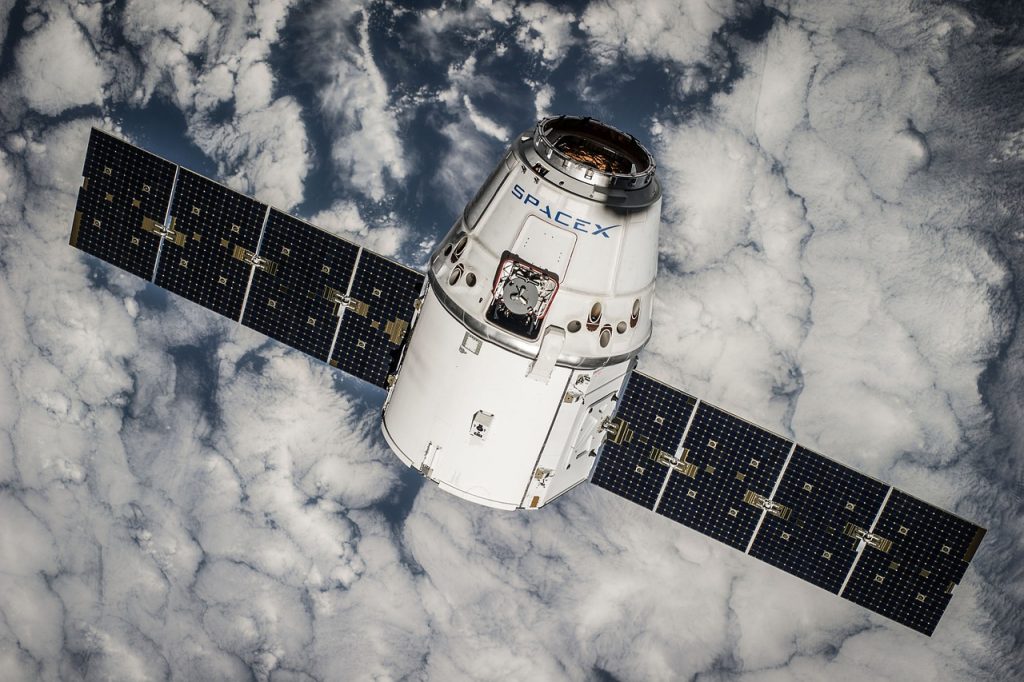SpaceX’s Internet Service Just Suffered A Huge Unexpected Loss
Find out why SpaceX satellites suffered a major blow upon launching into orbit.
This article is more than 2 years old

Due to some really bad timing, 40 of SpaceX’s Starlink satellites were inadvertently launched directly into a solar storm. Now they’re expected to fall out of orbit after the geomagnetic storm, triggered by a large burst of radiation from the sun, disabled them. According to Harvard-Smithsonian astrophysicist Jonathan McDowell, the incident is believed to mark the largest collective loss of satellites stemming from a single geomagnetic event and was unique in the way it unfolded.
As reported by CNN Business, this type of storm occurs when streams of charged particles, or solar winds, emit from the sun and interact with Earth’s magnetic field. The energized particles can heat the upper atmosphere, causing it to thicken. Unfortunately, the storm impacted the area of orbit where SpaceX’s newest Starlink satellites were deployed. And it made the atmosphere so dense that the satellites weren’t able to maneuver their way up to their intended orbit.
The SpaceX satellites were launched as part of the company’s internet communications network. It’s not clear how large the financial impact will be because no one really knows how much it costs to build a Starlink satellite. But in 2019, the company’s president Gwynne Shotwell said that the price was well below $1 million each.
The doomed SpaceX satellites were expected to join approximately 2,000 others that it has already launched as the company works to expand its global space-based internet business. The venture is very unique and the aerospace giant hopes it will allow people, in even the most remote areas of the world, to gain high-speed internet access. But they will eventually need as many as 42,000 working satellites to blanket the globe in connectivity to deliver high-speed, uninterrupted service. As of January, the service had about 145,000 users across 25 countries.

It’s not totally clear how SpaceX evaluated the weather ahead of last week’s satellite launch. But Starlink operators did try commanding the satellites into a “safe-mode” orbital configuration. This would have allowed them to fly edge-on to minimize drag. But those efforts failed for most of the satellites, forcing them into lower levels of the atmosphere where they burned up on re-entry, SpaceX said via Reuters.
“This is unprecedented as far as I know,” McDowell told the publication. He said the incident raised questions of whether the elevated orbital drag caused by the storm exceeded design limits or whether SpaceX incorrectly believed that their satellites could handle so much density. Also, it seemed like they weren’t expecting to have to handle that much density, either. The company has not revealed any more details about the unfortunate incident with their satellites.
The mistimed launch probably won’t do too much harm to SpaceX. The Los Angeles area-based rocket company founded by billionaire entrepreneur Elon Musk has launched hundreds of small satellites into orbit since 2019 as part of its Starlink service for broadband internet. So after some investigations into their weather miscalculation, the company probably won’t be making that mistake again.
Interestingly, in a new filing with the Federal Communications Commission, which approves satellite launches, NASA said they were concerned that the number of satellites SpaceX has proposed for the future could become a threat to the International Space Station and other important assets in space.




